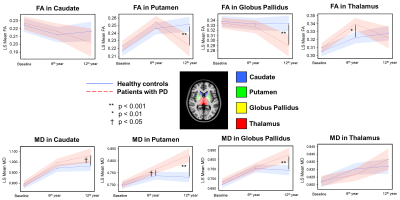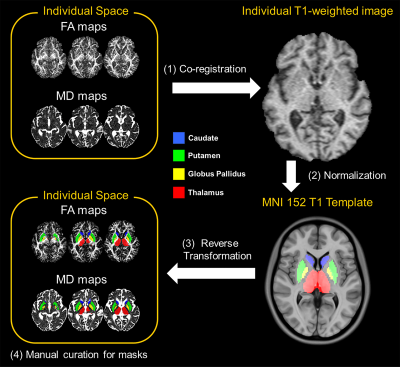Yao-Chia Shih1,2, Qi Rong Leon Ooi3, Septian Hartono2,3, Thomas Welton2,3, Hui-Hua Li2,4, John Carson Allen2, Eng King Tan2,3, and Ling Ling Chan1,2
1Department of Diagnostic Radiology, Singapore General Hospital, Singapore, Singapore, 2Duke-NUS Medical School, Singapore, Singapore, 3Department of Neurology, National Neuroscience Institute (Outram-campus), Singapore, Singapore, 4Health Services Research Unit, Singapore General Hospital, Singapore, Singapore
1Department of Diagnostic Radiology, Singapore General Hospital, Singapore, Singapore, 2Duke-NUS Medical School, Singapore, Singapore, 3Department of Neurology, National Neuroscience Institute (Outram-campus), Singapore, Singapore, 4Health Services Research Unit, Singapore General Hospital, Singapore, Singapore
Widespread deep nuclear neurodegeneration as evidenced by MD
increases is seen in late PD stages after 12 years, while FA changes suggested
more complex interplay of iron deposition effects and functional re-organization
in the putamen and thalamus.

Fig. 2 Temporal
FA and MD profiles in the four deep gray nuclei across 12 years. In each line
chart, the blue solid line indicates mean DTI metric in healthy controls,
whereas the red dotted line indicates mean DTI metrics in PD patients. The
upper and row charts refer to FA and MD changes respectively.
